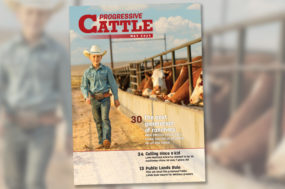How does it strike you that the more concentrated agriculture becomes, the more rural/ag media is available? Regional farm, ranch and equine-oriented publications are still a very strong part of our print media. Many of them have been around for more than 50 years.
Local radio ag programming came along and was able to give farmers a daily dose of the market and information news. Granted, with the coming of civilization, most metropolitan radio stations pretty much ignore ag-related subjects, but in rural world ag broadcasters still have a place. The latest addition to radio ag programming on a national basis is SiriusXM channel 80, RFD rural radio.
Ag programming on television has always been regional. The U.S. Farm Report was born in 1975 and became the first real “national” farm program and is still strong. Technology gave us DTN out of Omaha. It was a wireless program you could sign up for and receive news about the weather, markets and some commentary.
Cable and satellite (Dish and DirectTV) began in a big way in the ’90s. They offered channels that appealed to a specific audience. RFD-TV network was devised to offer exclusive programming for ag and rural lifestyles.
Its success and growing availability is due to 24-hour programming that is specifically directed to the community of listeners who are interested in collecting tractors, training horses, home cookin’, BBQ, church, raising cattle, the FFA and old country music.
Unlike many cable and satellite network programs that “push the envelope” with coarseness, crudeness, violence, nudity and profanity, the rural media network actually screens every episode of every program to ensure that it represents family values.
It is apolitical, though like the U.S. Farm Report, there are programs that examine and comment on government issues that affect agriculture. RFD-TV and Rural TV are growing steadily as urban people move to the countryside, adopt a rural lifestyle and want to raise livestock, a garden or buy a tractor.
Fifteen to 20 years ago, when cable and satellite companies began to take over the airways, I admit I had a hard time imagining the explosion in ag media that has occurred. After all, the census keeps saying that less than 2 percent of the U.S. population is active in production agriculture.
An increasing number of consumers want to know where their food comes from. RFD-TV and U.S. Farm Report are places they can go to meet the people who feed them. It has changed agricultural marketing.
Advertisers can now reach a significant number of ag buyers on a national basis. It’s good for everybody. But the most useful and satisfying result of vibrant ag media expansion is that it keeps the ag community in touch with each other. And that is an accomplishment in itself. PD




